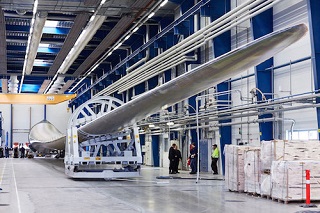No Surprise Here, Wind Turbine Cost-Effectiveness Continues to Improve

Gary wrote this about offshore:
Here, technologies are less mature and costs are higher, but they are declining faster due to being at an earlier stage in the learning curve.
The optimum size here appears to be over 6 MW; MHI Vestas has commercialized an 8 MW turbine with a 164 meter sweep. Few people realize how big this is; the swept area of this turbine is equal to three soccer fields.
Future turbines are expected to get even larger as foundations, cable connections, and O&M all form a far larger component of levelized cost of electricity than onshore; larger turbines mean fewer foundations, fewer cable connections, and fewer units to maintain.
This being the case, a larger turbine, even if its cost per kW is higher, can be cost-effective if the extra turbine costs are offset by greater savings elsewhere in the overall wind farm package. Foundations, cabling, and O&M only increase slightly with larger offshore turbine size, so the industry demands ever larger turbines. Thus, higher towers, larger generators and longer blades become an attractive means to lower levelized cost of electricity.
Prototype wind turbines rated at 10 MW are at an advanced stage of design, and likely to begin deployment shortly, while even larger turbines up to 20 MW are at the early research concept stage. It remains to be seen how big offshore turbines will eventually get but it is a fair assumption that those over 10 MW will eventually become the norm for this market segment.
That being said, check out what’s happening in Denmark. A joint venture between three world leaders in the wind energy industry: the French nuclear and renewable energy giant Areva, the Spanish leader in wind turbines Gemesa, and Danish LM Wind Power, with over 6000 employees worldwide, is creating the world’s largest wind turbine, with blades 290 feet long (see pic above).

Hi Craig,
(Reader’s note: The “pic above,” referenced in the post, is missing.)
Denmark has long enjoyed clever and ethical leadership – their people rate among the happiest in the world, and they’re also rated as one of the top most business-friendly countries on the planet.
It’s definitely worth one’s time looking at how the Danes have done things…
The government is a representative democracy with universal suffrage.
Like other nations in the region, Denmark combines free market capitalism with a comprehensive welfare state and strong worker protection. They enforce a developed mixed economy and rank highest in the world for workers’ rights. Danes enjoy a high standard of living, and the Danish economy features extensive government welfare provisions.
In terms of education, Denmark has the fourth highest percentage of tertiary degree holders in the world. All university and college (tertiary) education in Denmark is free – no tuition.
The country’s high wage floor is recognized as resulting from the power of trade unions. For example, as the result of a collective bargaining agreement between the 3F trade union and the employers group Horesta, workers at McDonald’s and other fast food chains make the US equivalent of $20 an hour (that’s more than double US McDonald’s workers). These workers have five weeks’ paid vacation, parental leave and a pension plan.
Across a number of metrics, Denmark is a useful example to which we here in the United States would do well to pay close attention.
But, not to make excuses, they are advantages that we don’t: huge resources, low demand, and a neighbor (Germany) to which they can sell as much off-peak power as they want. Economically, they also have significant advantages: 1/50th the population of the US, essentially all well-educated with virtually no underclass.
Fixed the pic; thanks.